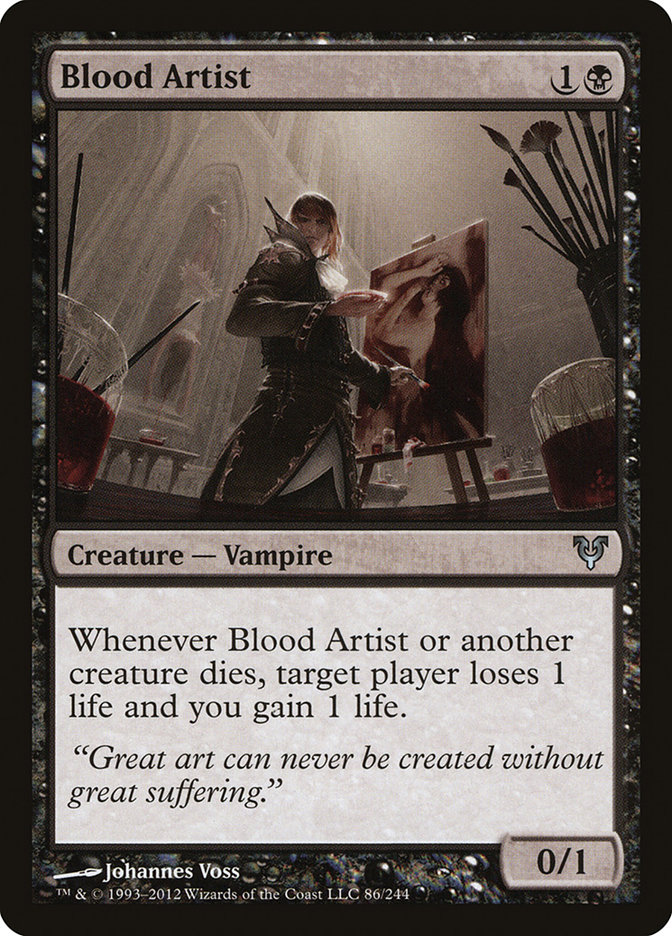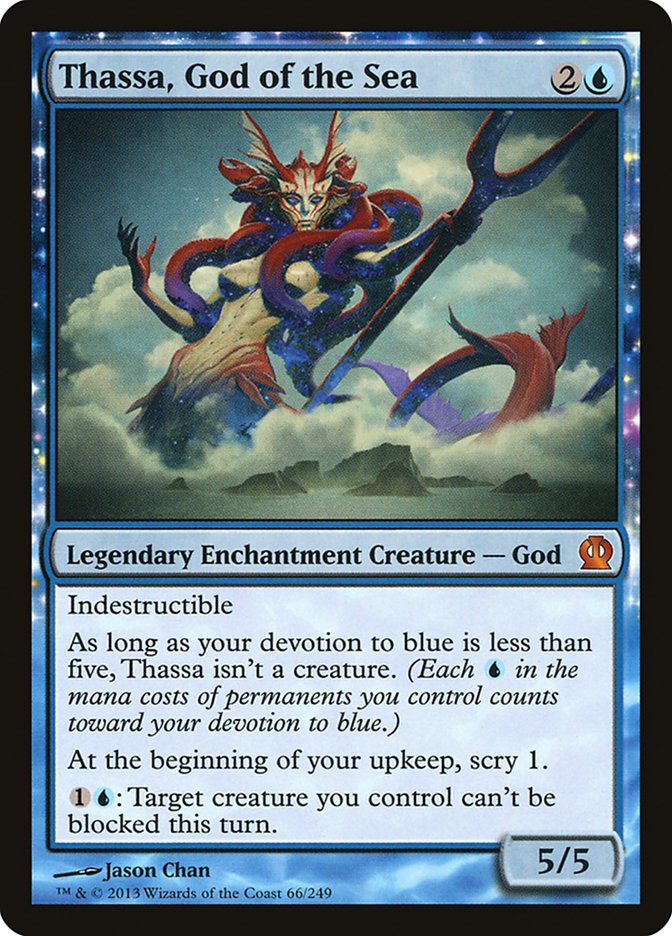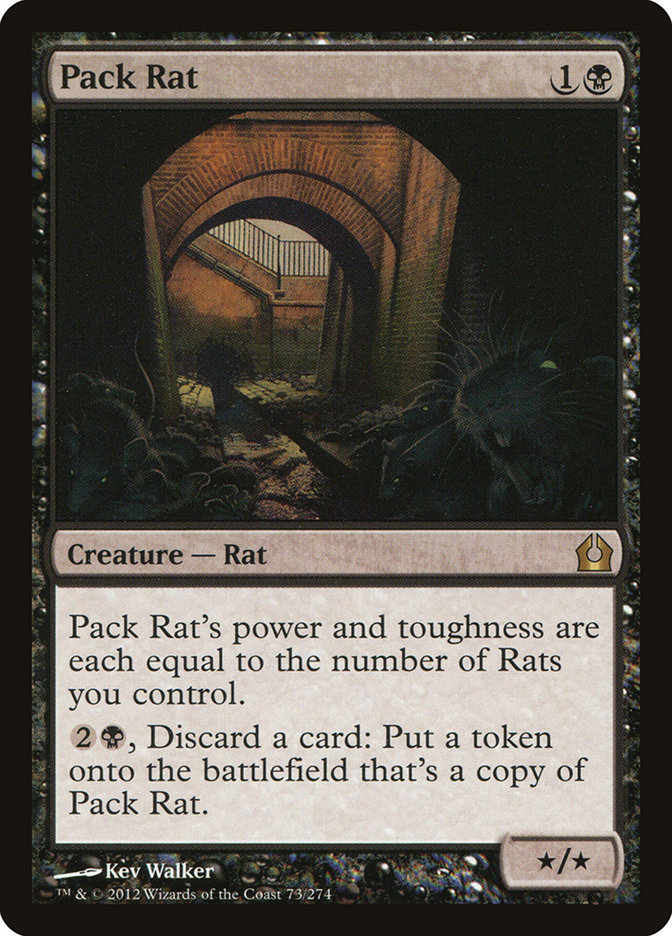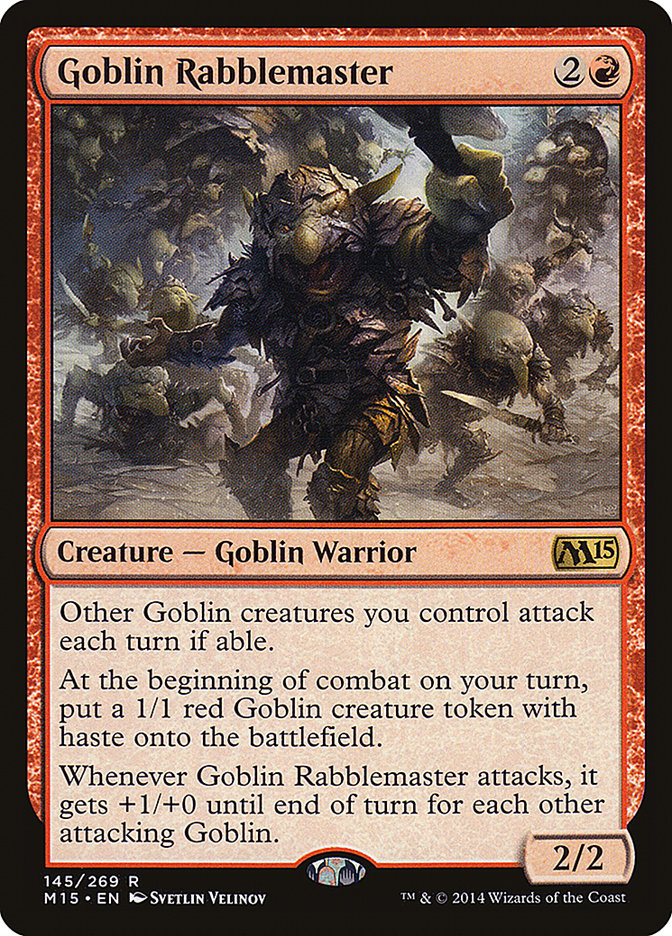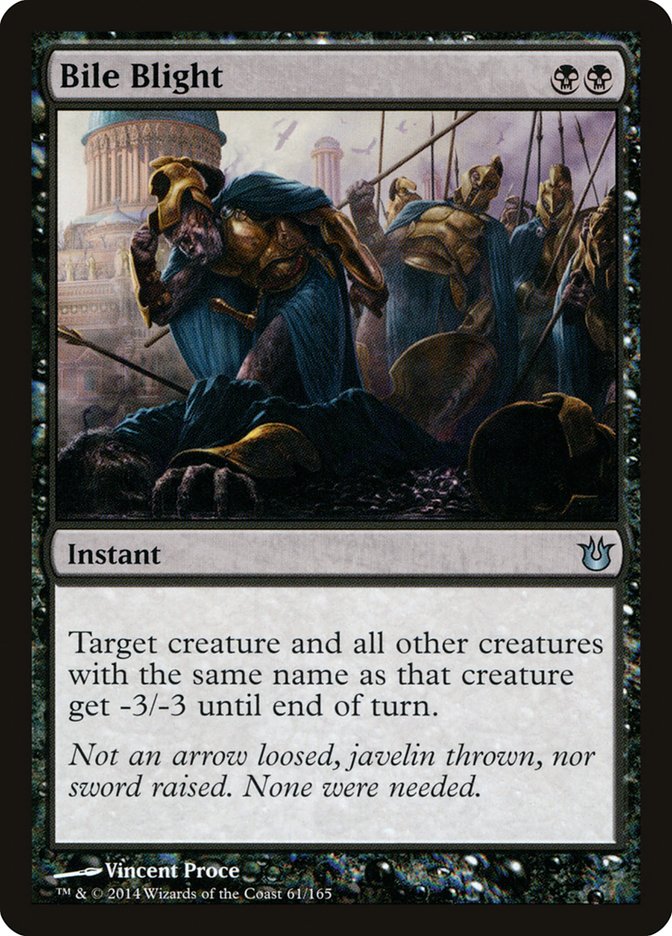This has been quite the peculiar Standard format over the past year. It’s peculiar because the use of “over the last year” to define a Standard format is
needed. Never have I seen a format evolve ever so slightly over the span of an entire year with the same archetypes dominating month after month after
month.
Let’s just say that doesn’t make my job very easy!
There is one fascinating thing to come out of this year due to the fact that we have been playing with the same decks for so long: everyone has gotten
extremely proficient with the archetype of their choosing. The average player is pretty gosh darn good now! They know their lines, how to execute them, and
they know exactly how to sideboard. Very rarely do I feel that I have a significant edge when it comes to playing. The high power level of the spells do
happen to do some of the heavy lifting, but all-in-all, I feel that my skill level isn’t something I can properly leverage like I could last year.
You know…when I got to play with Blood Artist!
Please come back to me. Please.
If you take a step back from simply viewing Standard as a stagnant format, you will come to realize that this year was exactly what the new recruits
needed. We have seen Magic grow exponentially over the past couple years. The size of tournaments have doubled and tripled in size even though the number
of tournaments has almost quadrupled! With rapid expansion comes inexperienced players, which was very apparent pre-Theros. You could easily see new
players fumbling over decisions with Snapcaster Mage, Restoration Angel, Blood Artist, and Ghor-Clan Rampager. That just isn’t the case this year.
That is due to the fact that we got to play an entire year with the same archetypes, the same decks with only minor modifications, and the same questions
to be answered. This was a year based on logical understanding of how every card interacts with each other and not about how to “break” the format.
Surviving in Standard has been about realizing trends and understanding the next move. Those moves are just more subtle than they have been in the past.
Getting to play an entire year in this Standard format is one of the best “crash courses” into understanding how to become a great deckbuilder. Innovating
brand new archetypes is a daunting task that only after years of playing the game can someone truly have the foundation of understanding all of the
intricacies. Nothing compares to being able to master a deck for an entire year, test countless different cards, begin to understand what is needed when
predicting a metagame, and then executing with the ability to back it up. Most of these decisions are based on theory, but in this format they can be
executed enough times to obtain mastery.
The best example of this is Jared Boettcher.
Boettcher has been a champion of Mono-Black Devotion variants for as long as I’ve known him, yet he brings a different splash to every tournament he goes
to. He always has a specific reason for his innovations and constantly executes a strong gameplan. Nothing about his decks are mind-blowing on the surface,
but if you amplify the magnifying glass a bit, you will certainly appreciate why he does the things he does.
The point I’m trying to make is it is currently difficult to win tournaments solely on the fact that you can play Magic well. The decklist you submit is
vital for a strong finish and possibly more important than any other Standard format I have ever played in. Down to the 75th card, every decision you make
before registering your deck can be the difference between qualifying for an Invitational or playing in a side draft before lunch is served. Did you
predict the metagame correctly and have the appropriate cards? Are your sideboard plans proficient? Do you have gameplans when you need to deviate?
A prime example for mastering an archetype has to be Jadine Klomparen’s run at Grand Prix Chicago. Jadine ended up on my radar after I played her in a
win-and-in at Grand Prix Cincinnati. She was playing Mono-Black Devotion at the event, was making way better decisions than I was, won game 2 on the back
of making me believe something I had no business believing, and is still the last person to straight up outplay me. In the end, however, she had some very
fringe cards in her sideboard that she decided to bring in, and those cards did absolutely nothing against me and actually gave me the breathing room to
take over game 3, a game in which I initially stumbled.
Things changed for Grand Prix Chicago. Her deck was much more streamlined for the metagame, she understood her matchups better, and she walked away with
second place and a trip to Honolulu. She plays a mean game, but the edge she had for Chicago that she didn’t have for Cincinnati was a strong understanding
of the metagame and exactly how to have a streamlined sideboard for the matchups she knew she would face.
Pinpointing trends in the metagame has never felt more important due to the enhanced skill of the opposition. One of the most common decisions I used to
make going into tournaments was playing decks that were difficult to play against. This would not only give me an edge against the entire field but allow
me to pick up the wins needed to top 8 even when paired against bad matchups. My gameplan was to position myself favorably against the metagame and also
win enough times against my bad matchups to succeed. This is no longer an option anymore. Bad matchups are just that. Opponents know exactly what I can do,
how to dismantle my strategy, and have no fear while doing so. They simply have been there enough times to know exactly what my most powerful next move
could be. Sure, I could try to mitigate this by playing a deck way off the radar, but it would just lose to Pack Rat. If it didn’t lose to Pack Rat, it
would fall victim to Thassa.
Story of the format, am I right?!
“You unlock this door with the key of commonplace. Beyond it is the same exact dimension you’ve been stuck in since Peach Garden Oath was just a Magic
card. A dimension that is so uninspired, uninventive, and mundane that the thought of banging your head against a wall instead surprisingly enthralls you.
You’re perpetually gridlocked in a land of both routine and ordinary, of rats and revelations. You’ve just crossed over into the….. Midrange Zone!”
Standard consists of three basic strategies. On one end of the spectrum we have Revelation control decks. Sphinx’s Revelation is so good at obtaining
inevitability that no other deck can play the same game as this X spell. It stands alone as the only control deck that sometimes splashes a color for
specific needs when the format is too hateful for U/W Control to exist on its own.
On the other side of the spectrum we have some red deck that Tom Ross built. Similarly to Sphinx’s Revelation, Rabble Red does hyper-aggression better than
any other deck so it stands alone on that spectrum. This causes every other deck to be clumped into the “Midrange Zone”.
Now obviously there are decks that are more aggressive in nature than others, but the idea of a midrange deck is not always about “being the aggressor
against control decks and the control deck against aggressive decks.” That definition died with the creation of a million 5/5’s for three to four mana,
draw spells that gain you life, and pretty much every other amazingly efficient card in this overpowered format. Nowadays, the term midrange means decks
that are competing for board position. Every deck in the format that is not Rabble Red or Sphinx’s Control are doing just that. They all have ways to win
when they’re behind, which makes these decks playable, but most of the time they will lose when behind and win when ahead.
With so many decks competing in the Midrange Zone, it becomes more difficult to metagame against everything. There are just so many specific threats that
need to be answered. Removal in this format is good, but the creatures are better and not every creature will die to the same removal. The sad truth is
every deck needs removal since the creatures are just too big to ignore or try to race. If you’re on the draw, odds are you will have to interact with a
threat or two. It’s as simple as that.
Choosing the correct sideboard cards becomes the tension in the format since no deck can have every card they need for every matchup in the format, so each
person chooses a deck or two to ignore. Sometimes it’s based on metagaming, and other times it’s preference. The only constant is that it exists.
The deck that gets ignored most frequently is hyper-aggressive red decks due to their infrequency of being threatening in the metagame since they are
Thassa chow. This goes on for a couple weeks until some brave souls find a red deck to punish the metagame for ignoring it. Tom Ross did it at the Season
Two Invitational and Team Revolution did it thanks to Tom’s help for Pro Tour Magic 2015. Once the punishment is served, the entire metagame has one big
wakeup call and people choose to respect the deck again. Pharika’s Cures, Drown in Sorrows, and Anger of the Gods slowly find their way back into sideboard
at the sacrifice of a card here and a card there.
The hedging begins.
Right now we are deep in a hedging metagame. Everyone is trying to have a couple cards for every matchup because no one wants to be left in the dust from
an early Goblin Rabblemaster. One deck in particular loves it when a red deck gets popular and the metagame has “the fear” – Mono-Blue Devotion. Mono-Blue
thrives on this metagame shift because not only does the red deck that they prey on become more popular, but the removal spells in sideboards slightly
shift away from beating Mono-Blue.
We have seen Mono-Blue Devotion thrive ever since Rabble Red has become a top tier deck (the best example being GP Utrecht). There might be other variables
for this phenomenon since it was an underperforming deck at the Pro Tour, one of which could be that the players at the Pro Tour were very prepared for the
matchup. Another theory is that highly skilled players know how to play the Mono-Blue matchup quite well.
I do know that Mono-Blue Devotion is the type of deck that can leverage an advantage due to how difficult it can be to play against sometimes. That said, I
don’t know if that is actually the case right now. The only thing I do know is that there are very specific things to take into account when Mono-Blue
Devotion is not only overplayed, but also overperforming.
1. Decks that Mono-Blue Devotion preys on are poor choices.
Rabble Red
G/W Aggro
Brave Naya
These archetypes have an extremely tough time beating Mono-Blue Devotion on a regular basis. Yes, they do have the capabilities to win a match here or
there, but a focused sideboard for any bad matchup doesn’t turn it into a good one. These decks will always have a tough time beating the blue menace.
This reason alone is enough to not play these decks this weekend at a Standard tournament. Remember earlier when I was talking about the average skill
level of Magic players having significantly improved? Well these are the results of experienced opponents. I now would have a tough time pulling the
trigger on one of these decks solely because of the fact that Mono-Blue is a bad matchup and everyone who plays Mono-Blue knows this. They know that these
are the decks they prey on, and they’re ready for the tactics they bring to the table.
2. Black Variants that are built correctly can take over the food chain.
Mono-Blue picking up in popularity allows Mono-Black to potentially retake the throne on top of the food chain. With so many of Mono-Black’s bad matchups
becoming less popular and underperforming, the deck doesn’t have to waste as many slots to win those matchups. Now they can simply focus on Mono-Blue,
Mono-Black, and U/W Control–the things Mono-Black was designed to beat.
But what version of Mono-Black is going to be good? That is the toughest decision of them all; knowing exactly what you need to bring to the table. Just
because Mono-Black is good doesn’t mean every list is good.
The most interesting phenomenon occurs right around this time in the evolution of the metagame. With decks varying from Mono-Red all the way to Revelation
Control, we see everyone’s decklist stretched thin as players are trying to answer everything. Proof of this is the number of Bile Blights being played yet
the lack of Dark Betrayal sideboards. No, this one mana removal spell did not suddenly become bad. It just became a luxury to have and is no longer
considered a necessity like it was in previous metagames. Instead of wasting slots for the mirror, every black variant instead upped the number of Bile
Blights and called it a day.
With Polukranos, World Eater at an all-time low and Mono-Blue picking up in popularity, why not switch everything to Bile Blight, right?
Another trend is seeing the Jund Monsters decks all turn into Jund Planeswalkers. I have played a serious amount of Magic Online in the last week, and I
haven’t played against Jund Monsters a single time. Now Jund Planeswalkers has consistently showed up to the party with a whole array of tough to deal with
planeswalkers that are all great against the Mono-Black variants. This archetype shift has caused less green creatures to exist in the format yet at the
same time brought an abundance of answers for Lifebane Zombie. Sure, the deck runs Courser of Kruphix, but I’m assuming by now we all know that Courser of
Kruphix is not a great card against most other midrange decks.
“That hurts Brad.”
With this shift in the metagame, Lifebane Zombie has become obsolete! There really is no reason to continue playing this card until the metagame shifts
towards making it good again. Instead, Black Devotion decks should be playing higher impact three-drops that interact or break through. Power is good in a
format stretched thin, and Lifebane Zombie just isn’t up for the task anymore.
3. Esper Control is biding its time.
Standard has proven to have cyclical tendencies and one of the most common is that Esper will have its week when Mono-Black and Mono-Blue are exceptionally
dominant archetypes. Esper has a tough time dealing with decks that are trying to use quantity over quality because there are just too many temples to be
able to fight any hyper-aggressive strategy. That becomes a job for U/W Control and all of its untapped lands. However, those aggressive decks go out the
window when the story is all about U/W Control, Mono-Black, and Mono-Blue as dominant archetypes. This is the perfect storm for Esper to come in and reign
supreme for a week or two until the metagame once again shifts back to more copies of Voice of Resurgence and Domri Rade.
So where does that put us for this weekend? Well, the metagame hasn’t become too inbred to make Esper the best choice just yet, but there is one theory I
have about what to play this weekend. The surprise was ruined for anyone who watched my video early this week, but let’s just pretend that
you didn’t see it.
Creatures (13)
Planeswalkers (2)
Lands (27)
Spells (18)
- 4 Thoughtseize
- 3 Underworld Connections
- 2 Ultimate Price
- 4 Hero's Downfall
- 4 Bile Blight
- 1 Banishing Light
Sideboard

Brimaz, King of Oreskos is exactly what the doctor ordered. It lines up quite nicely with not only the removal being played but the threats being
presented. Unlike Lifebane Zombie, the true king of three-drops has a high toughness to get in the middle of combat and live to tell the tale. It also
lines up nicely against the decks running Selesnya Charm and Rubblebelt Makka since decisive blocks can cause a two-for-one due to the opponents low
toughness creatures.
Certain things had to be sacrificed to be able to play Brimaz, King of Oreskos. You see, B/W Midrange is an interesting deck in this metagame. It can be
good against anything, but not everything. Understanding this deck’s limitations will allow you to properly justify certain card choices. For example,
let’s compare this decklist to the one The Pantheon played at the Pro Tour.
Creatures (14)
Planeswalkers (2)
Lands (26)
Spells (18)

The Pantheon’s version of B/W Midrange was all about the Blood Baron of Vizkopa and for good reason. The metagame was rich in Swamps and Temple Gardens,
both of which are good places to be for a Blood Baron. The main issue I have with Blood Baron is that it’s quite poor outside of the G/W Aggro and Black
Devotion matchups, as it’s extremely underwhelming even in other matchups where your life total is important. All of the red decks now have Stoke the
Flames and R/W Burn even has Skullcrack, so winning a game on the back of Blood Baron of Vizkopa alone is rather unlikely.
Not playing Blood Baron of Vizkopa or Lifebane Zombie makes my version of B/W Midrange a significant dog in the mirror matches. I also lose some ground
against G/W Aggro, but I still feel that is close to a 50/50 matchup due to how powerful Brimaz, King of Oreskos can be against them. Being bad in the
mirror match isn’t ideal, but I have found my overall win percentage to be significantly higher with this list than when playing with Blood Baron of
Vizkopa.
The other major difference with my list compared to theirs is the 27th land. The inclusion of Brimaz, King of Oreskos forces the deck to need more white
sources than you can fit into a 26-land shell. Without wanting to cut a much needed black source, I was forced to play the 27th land. Keep in mind that
Brimaz, King of Oreskos, Desecration Demon, and Obzedat, Ghost Council give B/W Midrange a ton of raw power as long as they are backed up with removal
spells. All three of these creatures can close a game out very quickly, but it’s very important that they come down as quickly as possible to start doing
what they do best. With 27 lands, rarely will stumbling be an issue, and if you start to flood out, Pack Rat is a great resource hog for unneeded lands.
After playing enough midrange decks, I have slowly been coming to the realization that people don’t actually play enough lands. Every time I pick up a
stock list of a deck, I always feel the need to add a land to the maindeck and then promptly board one out when on the draw post sideboard. The logic
behind this is that every deck in the format is powerful enough to warrant some interaction but not too much since you will fall behind to whatever source
of card advantage they are trying to create. Stumbling isn’t an option in game 1, but this changes after sideboard since both decks get rid of weak cards
in exchange for more removal since every deck needs to interact with creatures. This allows you to safely board out a land and not feel any backlash.
I have been having exceptional results with this deck over the past week and highly recommend it for any serious tournament you will be attending. I will
be having a much more adventurous weekend as Todd and I will be traveling to Charlotte and Raleigh, North Carolina for a Super and Elite IQ just to get our
battle on in preparation for the Opens in D.C. and the Season Three Invitational that follows. I hope you guys enjoyed my convoluted take on Standard, and
if you have any questions, don’t hesitate to ask them.
Safe travels!

